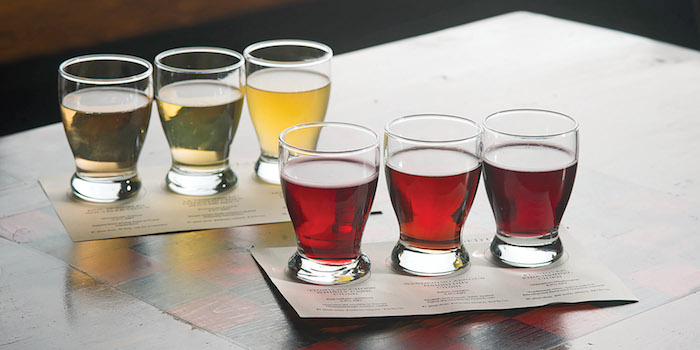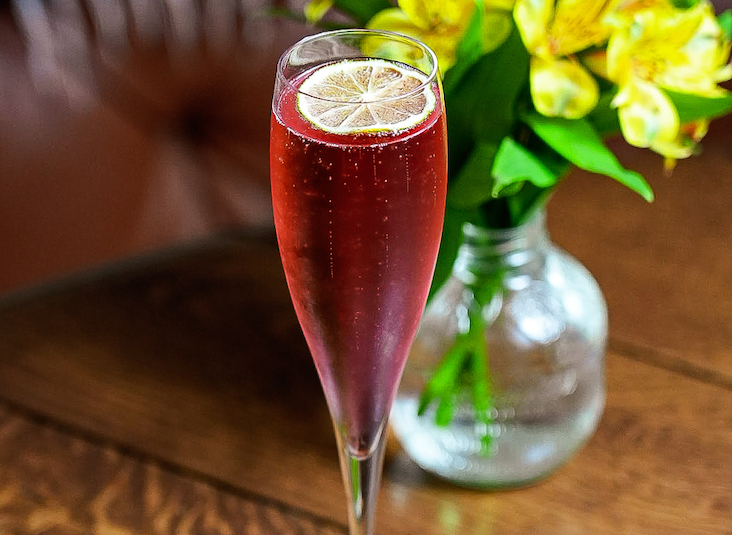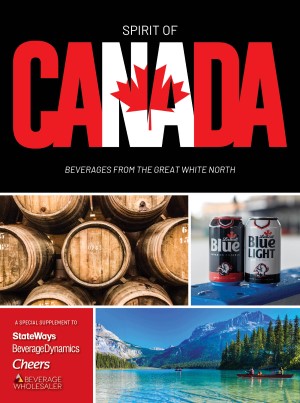The fermented-apple beverage is a perfect match for fall cuisine.
Hard cider brings together a number of worlds. It’s not uncommon to see this fermented-apple beverage poured at either beer fests or wine tastings. The distinct styles and flavors appeal to beer drinkers, while the refreshing, nuanced and tannic qualities of cider please wine enthusiasts.
That’s why you’ll see premium ciders featured prominently at bars and restaurants, paired appropriately with food dishes. Some newer businesses have even built their beverage programs around cider.
This commitment would not have been possible without the growing interest—and knowledge—of customers. Sales of leading cider brands increased 57.8% from 2013 to 2014, according to research from the Beverage Information Group.
Across the overall category, cider sales expanded by 63.1% during that time period. And since 2009, cider consumption shot up 700%.
“People in the past had confused all cider to be like [the nonalcoholic sparkling] Martinelli’s with alcohol,” explains Josh Pinkston, front house manager at Bushwhacker Cider, a new cider pub in Portland, OR. “They thought it was very sweet, like a kid’s drink. But now drinkers know that it’s none of those things.”
Like any craft beverage, hard cider can have different characteristics—tart, sour, dry, complex and flavorful. It’s naturally gluten free, and lower in ABV than wine and most craft beers.
The wide variety of cider fits in with the modern craft movement. There is dry-hopped cider, bourbon-barrel aged, sparkling, smoky or funky. Cider can be brewed with blackcurrant or cultivated like ice wine. American producers have started copying cider styles from Europe, where the beverage has traditionally been popular.
Cidermakers can borrow styles from both wine and craft beer. This also allows the beverage to pair well with a wide spectrum of dishes.
“There are not a lot of rules in making cider,” says Dan Pucci, cider director at Wassail, New York’s first fully dedicated cider pub. “And we’re still really in the infancy of it.”

Wassail Cider Director Dan Pucci recommends a French-style cider with the NYC pub’s cauliflower with black garlic and cashew.
The Big Apple
Wassail was born of this new interest in cider, and features an eclectic menu of modern ciders. These include French-style cider from Salem, OR-based E.Z. Orchards, which Wassail sells for $13 per 8-oz. pour.
“It’s super textured and savory,” Pucci says.
With this cider, Pucci recommends Wassail’s Chicken of the Woods mushroom dish, with bok choy, bulgur, and cured duck egg ($17). The dry, tannic qualities of the French cider match the lighter flavors of the mushroom, he says.
Another dish that plates well beside a glass of cider, Pucci says, is the cauliflower with black garlic and cashew ($18). He recommends diners try it alongside a 5-oz. pour of the Trabanco, from Sidra Natural of Spain ($5). The high acids help cut through the black garlic dish.
Wassail also contracts a house cider from Eve’s Cidery in New York. “It’s made in a still in the Champagne method, so it has a lot of character,” Pucci explains. The Eve’s Wassail Blend is available for $10 per pour, or $37 for a full bottle.
Pictured atop: Capitol Cider in Seattle sells cider flights of three 3-oz. pours for $14; the tavern currently offers a Spanish style, a single varietal-style flight, a showcase of E.Z. Orchard ciders from Salem, OR, and a continental flight with American ciders, including Alpenfire Organic Ember Bittersweet, AeppelTreow Perry and West County Golden Delicious.







